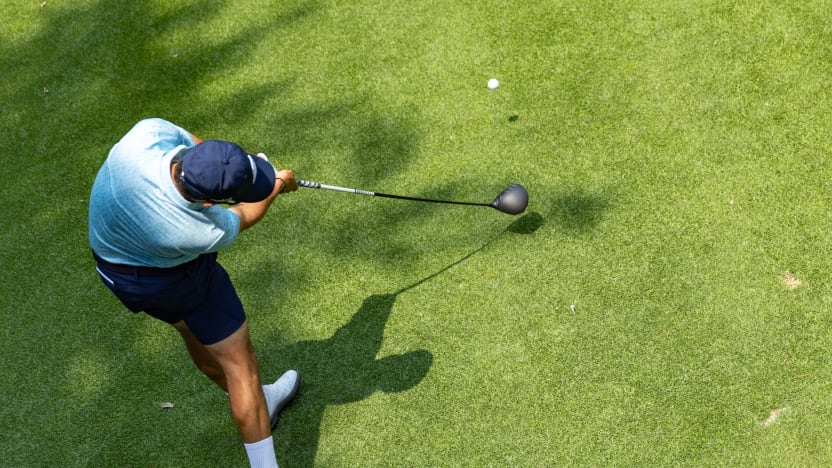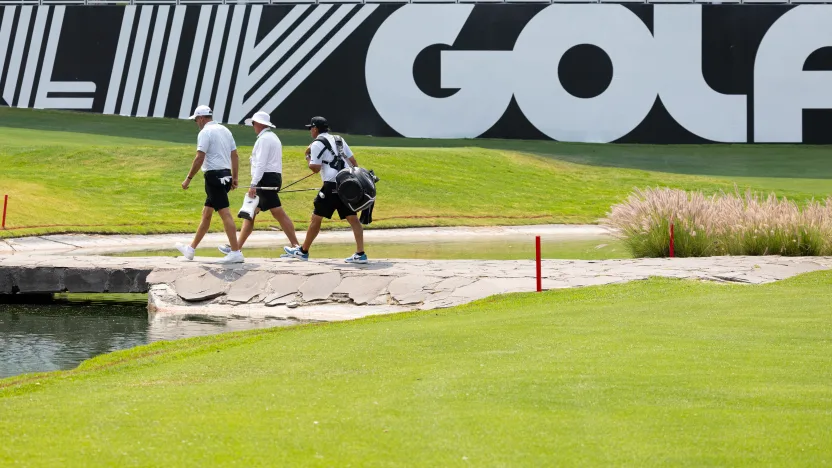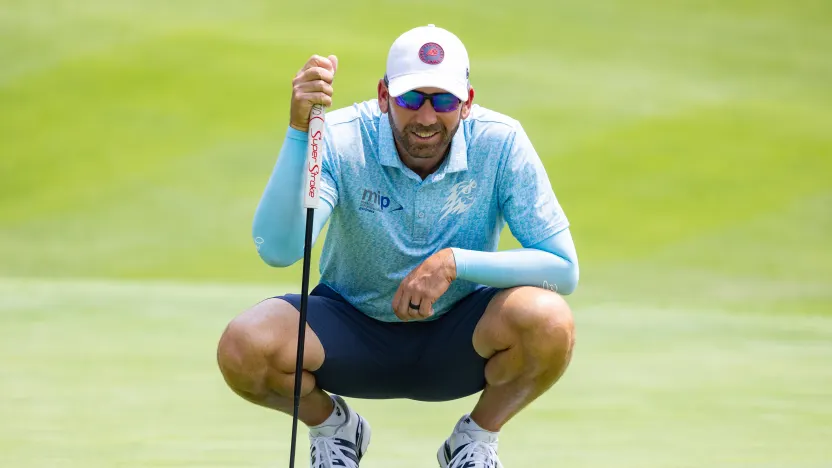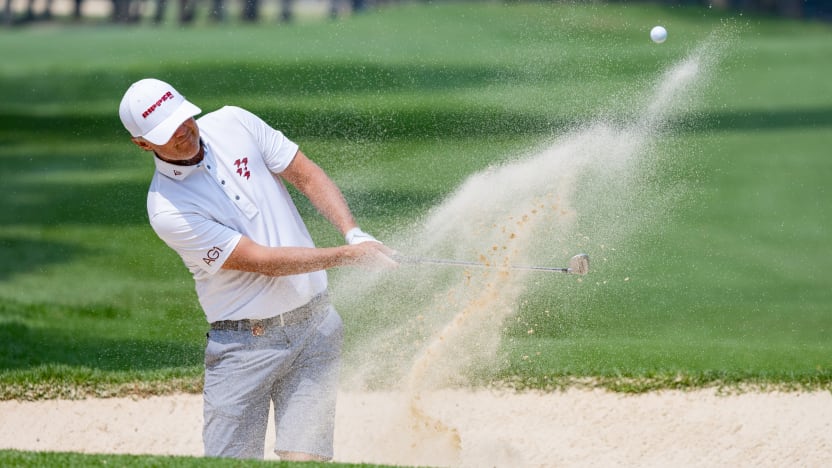400-yard drives? It’s likely in Mexico City’s thin air
Apr 24, 2025 - 7:45 PMWritten by: Mike McAllister

MEXICO CITY – Will there be a 400-yard drive in the thin air this week at LIV Golf Mexico City? David Puig, one of the league’s longest hitters, didn’t take long to ponder the question.
“I think so,” he said, “if the fairways get a little firmer and it’s downwind.”
The young Fireballs GC star nearly did it early in the week on the practice range at Club de Golf Chapultepec, hitting one drive that his launch monitor recorded at 354 meters, which is just over 387 yards.
“I swung out of my shoes,” Puig acknowledged, “but maybe it’s possible.”
Definitely possible. Perhaps probable. Even likely.
RELATED: Event home | The First Look | Power Rankings | Team notes
The last time Club de Golf Chapultepec – which sits 7,800-plus feet above sea level – hosted a World Golf Championships event was 2020. Justin Thomas hit a drive of 449 yards, the longest on the PGA Tour that season. The year before, Thomas hit a 457-yard drive, also the longest of that season.
Although the course has been tightened since then, with some fairways narrowed that might discourage a full let-it-rip approach, it remains a unique opportunity for the world’s top golfers to reach into the stratosphere.
Expect some crazy distances this week 👀
— LIV Golf (@livgolf_league) April 23, 2025
Playing at 7,500 feet above sea level the altitude here will add around 12% carry on tee shots and around 18% with the mid irons 📈#LIVGolfMexicoCity pic.twitter.com/z8Z7r1QEzF
Crushers GC Captain Bryson DeChambeau, the league’s driving distance leader last season and again this year, hit a 407-yard practice drive with a 15.1-degree launch angle. “Have to have the launch high enough, above 15 to work,” he said on the video of his swing.
Said an admiring Phil Mickelson: “That’s very sexy.”
Mickelson, a past WGC winner here, posted a video on his own social media channel in which he was practically giddy about the opportunity awaiting the 54 players off the tee.
“You can hit bombs, bombs up here,” the HyFlyers GC captain said. “It’s awesome.”
Then to provide proof, he “maxxed” out a drive that registered 362 yards carry.
“Get some,” Mickelson implored. “Get some of that!”
It’s no surprise that players are flying shots with regularity over the net that stands approximately 320 yards at the back of the range.
“It’s fun to be hitting it so far,” said Cleeks GC’s Adrian Meronk, who ranks 16th in driving average this season at 305.2 yards. He estimates the high elevation could result in as much of a 20% gain on distance, which would give him an extra 60 yards.
Club de Golf Chapultepec, hosting its first LIV Golf tournament this week, is the highest-elevated course in the league’s history, a span of 42 events since the inaugural 2022 season.
While the players are having fun flexing their muscles and salivating over their eye-popping Trackman numbers, competing at elevation also offers plenty of challenges this week.
Bryson is driving over 400yds… The ball flies further at 8000ft 🤯 pic.twitter.com/x8E6f1VSyc
— Crushers GC (@Crushers_GC) April 24, 2025
Stock yardages are essentially useless, so a new set of numbers need to be dialed in before Friday’s opening round. In the past, calculating those numbers often meant just working off a percentage increase depending on the course’s elevation above sea level.
The official yardage book for LIV Golf Mexico City, for instance, references the 10% increase for the Mile High city of Denver, Colorado, which sits at 5,280 feet. Then it references 15% for Club de Golf Chapultepec’s nearly 7,900 feet. Not only does it increase shot yardages, it also increases the gaps between clubs, forcing players (and their caddies) to make tough choices on club selection.
It’s an adjustment that 4Aces GC Captain Dustin Johnson has successfully made here, having won WGC events in 2017 and 2019.
“You have to do a lot of calculations, which I like because it kind of keeps me focused on every single shot,” he said.
The percentages can even vary depending on ball height and trajectory. High-ball hitters will see an even larger increase. “The higher I hit it, I can get anywhere up to 20%,” said Stinger GC’s Dean Burmester, “but if I flatten it out, it can be 10 to 12%.”
The advent of technology in recent years, however, has essentially eliminated the need for making educated guesses based purely on percentages. Players can now get to the range, set up their launch monitors and get an exact yardage for how far they can hit every club in the bag. Practice rounds are also valuable for a quick look at the monitors.
“No more guesswork,” said Smash GC’s Jason Kokrak. “You just have a whole new set of numbers in the bag this week.”
“You’re going to see a lot of launch monitors on the range and on the golf course,” added the Fireballs’ Abraham Ancer. “Everybody’s trying to figure out their formula of how to attack the altitude.”
Having those numbers is one thing. Committing to those numbers is another. That’s the real challenge of playing at elevation.
I’m in Mexico City HITTING BOMBS!!
— Phil Mickelson (@PhilMickelson) April 24, 2025
If you’re in doubt, check this out! 👊#hyflyers#forwellness pic.twitter.com/fGtZbKos6B
The 4Aces’ Patrick Reed won the last WGC tournament held here in 2020. He said a 7-iron that normally goes 185 yards will travel 210 yards this week. But when he faces such a shot at that distance, the mental battle will be to trust the adjusted number and swing normally – and not overswing because it's not the usual stock number, or make a panic move by switching to a lower-lofted club.
“The preparation going in is to make sure you have that dialed in, that you’re comfortable pulling the club at certain distances instead of going off old numbers,” Reed said.
Noted Puig: “It’s hard to believe that you hit a 50-degree 190 yards. I’m not used to that. Committing is going to be a super-important factor.”
Added Burmester: “The machines will only tell you so much. Getting your eye used to it is another thing. That it really is how far it looks and how far it’s going. That’s the challenge.”
Despite the appeal of blasting huge drives, the biggest competitive impact based on elevation actually comes on the shorter clubs.
Since approach shots will be closer to greens, players likely will hit more wedges and short irons this week – and many of those shots will be less-than-full swings. Expect a lot of greens being airmailed from inside 100 yards.
“It’s going to be a challenge to control what sort of swing you need to make,” said Puig, “especially for those 70, 80, 90, 100-yard shots.”
Added Meronk: “You have to nail those easy shots, half-shots, three-quarters shots. The guys who can control the easy shots and the trajectory will have a better chance.”
And so despite all the are-you-serious yardage numbers that will be delivered off the tee in Mexico City, the advantage for bigger hitters may be negated. After all, everybody’s hitting it far at this altitude.
“Shorter hitters are going to gain a lot,” Burmester said. “They’re going to hit a lot of fairways and greens, and they’re not going to have a lot [of yardage] into the greens. I can’t think of a better golf course for a guy like Richard Bland.”
Bland ranks 42nd in driving distance with a 292.3-yard average, but this week he’s hitting bombs.









